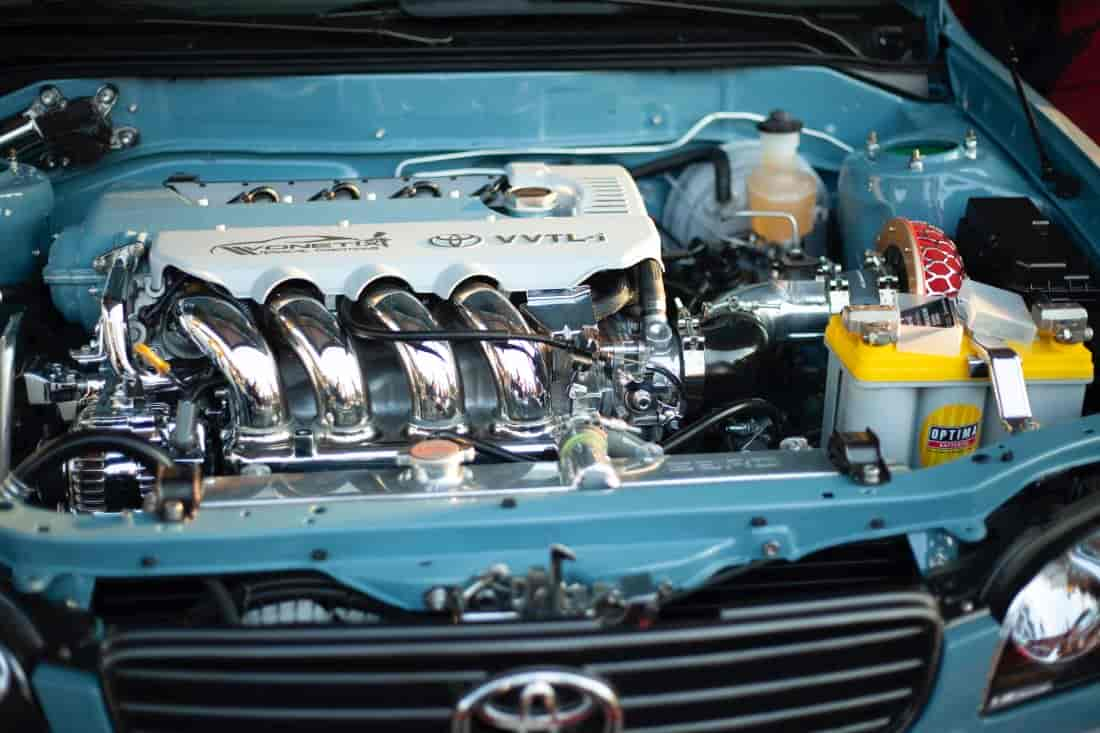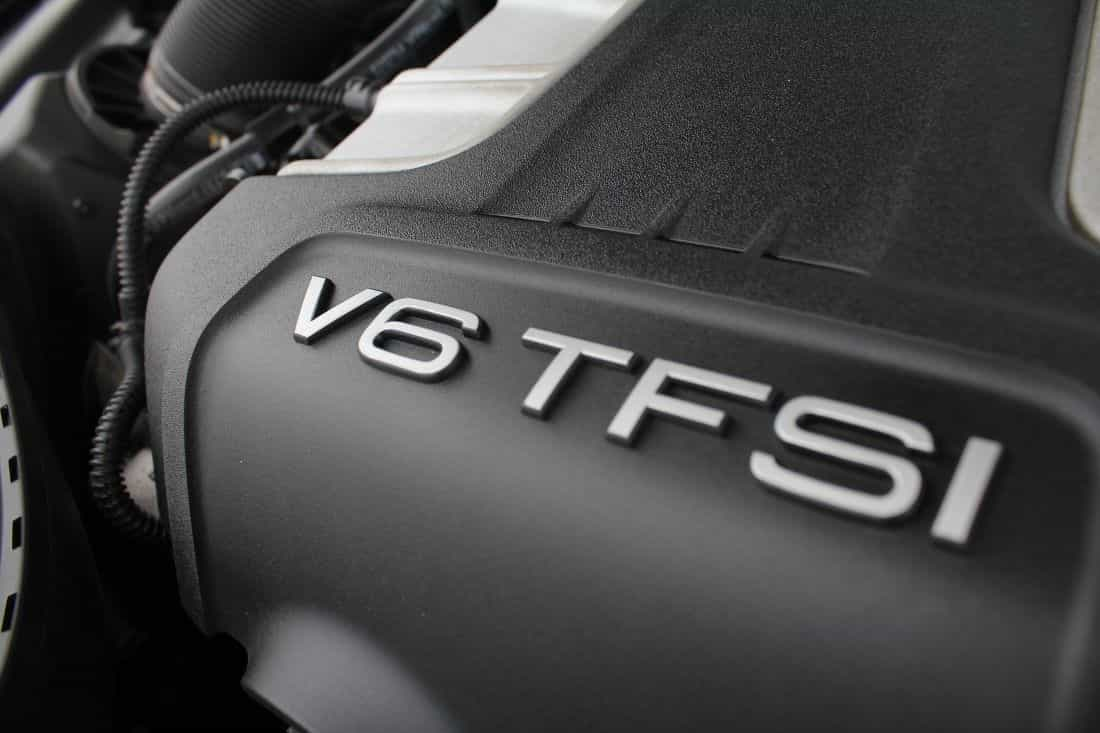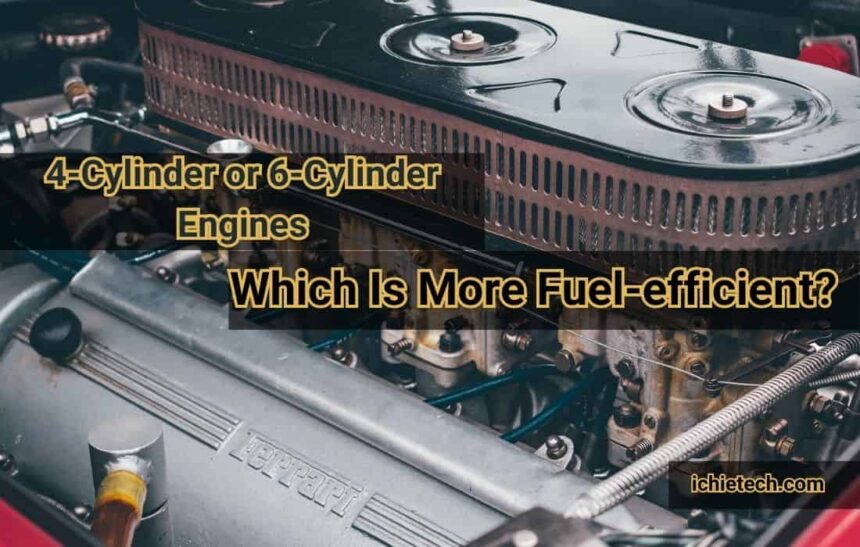If you’re planning to buy a car, knowing the difference between a 4-Cylinder or 6-Cylinder Engines is a piece of very important knowledge. With gas prices always fluctuating, choosing an engine that can help you save money at the pump is crucial.
Automobile enthusiasts sometimes debate whether a four-cylinder or six-cylinder engine is more fuel-efficient, but the answer depends on your driving style and personal needs. This article will examine the differences between 4 and 6-cylinder engines and provide advice on which option may be best for you.
What Is an Engine
A motor engine is a mechanism used to run a vehicle or other mechanical equipment by converting fuel into mechanical energy. For it to work, the fuel must be ignited in a combustion chamber that produces high-pressure gases. These gases then apply force on pistons, which in turn cause a crankshaft to revolve to generate power. Last but not least, this power is transmitted to other components like wheels or other mechanical pieces.
4-Cylinder Engines

An internal combustion engine with four cylinders that are either placed in a straight line or a “V” form is known as a 4-cylinder engine. Power is produced by moving the piston in each cylinder as a result of fuel combustion.
The engine’s power output depends on the size of each cylinder and the rate at which they fire. Compared to engines with fewer cylinders, 4-cylinder engines are typically more efficient and less polluting, hence a popular choice for small and mid-sized vehicles.
The 4-cylinder engine has been in use since the invention of the vehicle, and it has undergone constant development to offer better performance and fuel economy. Manufacturers may now create 4-cylinder engines with fewer but more powerful cylinders that have the same output as bigger engines while using less fuel thanks to technological improvements.
Right now, a wide range of vehicles, including pickup trucks, small cars, and SUVs, use 4-cylinder engines. Also, they are utilized in industrial equipment, generators, and other devices that need steady and effective power.
Advantages of 4-Cylinder Engines
- Engines with 4 cylinders use less gasoline than those with more cylinders. To produce the same amount of power, they need less fuel, which lowers running costs and lowers pollutants.
- The production of 4-cylinder engines is also generally less expensive than producing engines with more cylinders, which helps to lower the entire cost of a vehicle.
- Another benefit of their reduced size is that they are more compact and take up less room in the engine compartment due to having fewer cylinders. This is especially helpful for compact automobiles or electric vehicles that have constrained space.
- Another advantage of fewer cylinders is lighter weight, which improves performance and handling.
- In addition to operating more smoothly, 4-cylinder engines generate less power strokes each revolution than higher-cylinder engines. As a consequence, driving is more peaceful and relaxing.
Disadvantages of 4-Cylinder Engines
- Due to the fewer cylinders providing power, 4-cylinder engines may have a lesser power output when compared to higher-cylinder engines. For vehicles that need a lot of power, such as trucks or high-performance sports cars, this could be a disadvantage.
- 4-cylinder engines usually generate less torque, the twisting force that propels the wheels. This might make it challenging for the car to pull big loads or accelerate fast.
- Four-cylinder engines may sustain more wear and tear since they must work harder to produce the same amount of power as bigger engines. This results in greater maintenance costs and a shorter engine lifespan.
- Due to their lower number of power strokes per revolution, 4-cylinder engines can also be louder than higher-cylinder engines. Driving may become less enjoyable as a result.
- While 4-cylinder engines can run quietly, they can also be more prone to engine noise and vibration than their counterparts with more cylinders.
Also read:
6-Cylinder Engines

A 6-cylinder engine is an internal combustion device that has six cylinders set up in a straight line, “V” shape, or flat layout. Each cylinder has a piston that oscillates up and down, which helps the engine produce power through the burning of fuel. 6-cylinder engines are frequently favoured for bigger vehicles like SUVs, pickup trucks, and high-performance sedans because they are more powerful and provide more torque than 4-cylinder engines.
The extra cylinders of a 6-cylinder engine give more power and smoother operation, resulting in a more comfortable driving experience. Unfortunately, the bigger and more complicated engine design results in reduced fuel economy and greater production costs. Generally, 6-cylinder engines provide a fair blend of power and efficiency, making them the preferred choice for drivers who value performance and towing capability above fuel economy.
Advantages of 6-Cylinder Engines
- Six-cylinder engines often create more power than four-cylinder engines, making them a popular choice for bigger vehicles or those requiring a lot of power, such as SUVs, pickup trucks, and sports cars.
- Since 6-cylinder engines have more power-generating cylinders, they create higher torque or the twisting force that powers the wheels. This can be advantageous in cars that need to tow or transport heavy loads.
- Because there are more power strokes per revolution, 6-cylinder engines tend to run more smoothly than engines with fewer cylinders. As a consequence, driving will be more pleasant and peaceful.
- 6-cylinder engines create greater power and torque than 4-cylinder engines, they can give improved acceleration.
- 6-cylinder engines may perform better in a range of driving scenarios, including off-road, towing, and high-speed driving.
Disadvantages of 6-Cylinder Engines
- Fuel efficiency is worse in 6-cylinder engines than in 4-cylinder engines because they take more fuel to create the same amount of power. This can lead to greater operational expenses and higher emissions.
- Since six-cylinder engines have more components than 4-cylinder engines, they might be more expensive to produce. This may result in greater expenses for both consumers and producers.
- 6-cylinder engines are often bigger and heavier than 4-cylinder engines, which might affect vehicle weight and handling. In vehicles that demand agility and manoeuvrability, such as sports automobiles, this might be a disadvantage.
- Because 6-cylinder engines typically create more power than engines with fewer cylinders do, they are more likely to sustain wear and tear over time.
- Compared to engines with fewer cylinders, 6-cylinder engines can emit more emissions since they need more fuel to provide the same amount of power. In areas with stringent emissions laws, this can be a drawback.
Also read:
Comparison
| Factor | 4-Cylinder Engine | 6-Cylinder Engine |
| Power and performance | power and torque output is decreased | power and torque output is increased |
| Fuel efficiency | Higher fuel efficiency | Lower fuel efficiency |
| Cost | cost is reduced, both upfront and ongoing | cost is increased, both upfront and ongoing |
| Size and weight | Smaller and lighter | Larger and heavier |
| Smoothness of operation | Less smooth and more vibrating | Typically smoother operation |
| Acceleration | May not offer quick acceleration | Faster acceleration |
| Emissions | Reduced emissions due to smaller engine size | Higher emissions due to larger engine size |
| Driving conditions | Appropriate for driving in the city and suburbs | Suitable for highway and towing situations |
| Personal preferences | May be attractive to drivers who prioritize efficiency | May be appealing to drivers who prioritize power and speed |
Factors To Consider When Choosing Between a 4-Cylinder and 6-Cylinder Engine
- Power and performance requirements: A 6-cylinder engine can be a better option if you need greater power or hauling capability. A 4-cylinder engine would be more appropriate, though, if fuel economy and cheaper running expenses are your top priorities.
- Driving practices and road circumstances: Both your driving practices and the road conditions you are driving in can affect the performance and fuel economy of your engine. A 6-cylinder engine can be a better option if you drive on the highway frequently or need to pull large loads. A 4-cylinder engine would be more appropriate if you mostly travel through cities or on suburban routes.
- Cost: 6-cylinder engines are often more expensive than 4-cylinder engines, both in terms of initial expenses and continuous operational costs. Assess your finances as well as the long-term expenditures of owning and managing the car.
- Emissions regulations: Depending on where you live, emissions regulations may influence your engine choice. 6-cylinder engines may be prohibited in some areas or subject to extra taxes or fees.
- Personal preferences: Ultimately, the engine you choose will be determined by your tastes and priorities. Before making your choice, consider elements such as noise level, smoothness of operation, and overall driving experience.
Conclusion
4-cylinder engines are often more fuel-efficient than 6-cylinder engines due to their smaller size and weight. Other factors to consider include performance requirements and driving habits, with the final decision depending on individual circumstances and preferences.











Hi there very cool web site!! Man .. Beautiful .. Superb .. I will bookmark your web site and take the feeds also�I’m glad to find a lot of helpful info here in the submit, we need work out extra strategies on this regard, thanks for sharing.